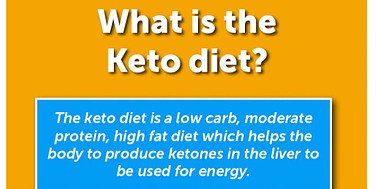How to Understand Puberty
Parental Roadmap for Teens
Puberty marks one of life’s most significant transitions—from childhood to adulthood. During this transformative period, young bodies undergo remarkable changes driven by hormones, leading to physical, emotional, and psychological development. While each child’s journey through puberty is unique. Knowing how to understand puberty is an art and science. Knowledge helps parents and children navigate this vital phase with confidence and awareness.

How to Understand Puberty
What Triggers Puberty?
The puberty process begins in the brain, specifically in the hypothalamus. This vital organ releases gonadotropin-releasing hormone (GnRH), signaling hormonal changes throughout the body. Do you know how to understand puberty? It is no child’s play (pun intended).
The pituitary gland responds by producing luteinizing hormone (LH) and follicle-stimulating hormone (FSH), which signal the sex organs to produce estrogen or testosterone.
Timing Matters
Timing plays a crucial role in the onset of puberty, with notable differences between girls and boys. Girls typically experience the beginning of puberty between the ages of 8 and 13. At the same time, boys start slightly later, between ages 9 and 14. The specific timing of puberty’s onset isn’t solely determined by gender – multiple factors come into play. Genetic and environmental influences can affect when these changes begin, and research has shown that ethnicity can also play a significant role in determining the timing of pubertal development.
The Five Stages of Development
For Girls
The female body undergoes several significant changes during puberty:
Stage 1: Preparation Phase (Typically ages 8-11)
Significant hormonal changes begin internally during this initial stage, though no external physical changes are visible. The hypothalamus in the brain starts releasing gonadotropin-releasing hormone (GnRH), which triggers a cascade of other hormonal changes, setting the stage for development.
The adrenal glands above the kidneys undergo essential maturation during this time. They begin producing small amounts of androgens, particularly DHEA (dehydroepiandrosterone). This gradual increase in androgens helps prepare the body for the upcoming development of body hair and other changes. Additionally, the adrenal cortex expands its hormone production capabilities to support future growth.
The ovaries begin to enlarge and increase their hormone production capacity regarding ovarian development. They become more sensitive to hormonal signals from the pituitary gland, and early follicular development begins. However, menstruation is still months or years away. The ovaries also start producing small amounts of estrogen, though not enough to cause external changes.
Several other internal changes occur during this preparatory phase. The pituitary gland increases its hormone production, and bone growth accelerates slightly. Fat distribution patterns begin subtle shifts, and the immune system undergoes some recalibration. While outwardly nothing appears different, these internal changes are essential for proper development through the rest of puberty, laying the crucial groundwork for the more visible changes that will occur in later stages.
Stage 2: Initial Changes (Ages 8-13) in short order:
- Breast development begins
- First appearance of pubic hair
- Height increases begin
- Body odor may develop
This stage marks the beginning of noticeable physical changes in puberty, typically between ages 8 and 13. During this phase, one of the first visible signs is the development of breast tissue, which begins as tiny, tender buds beneath the nipples. This development, known medically as breast buds, starts on one side before the other, though both sides typically even out over time. Around the same period, fine, straight pubic hair begins to appear, initially sparse and light in color before gradually becoming darker and coarser.
This stage often brings a noticeable acceleration in height, with many experiencing growth spurts that can add several inches within a relatively short period. The increased activity of sweat glands, combined with hormonal changes, may lead to the development of body odor, making this an appropriate time to introduce regular deodorant use and establish good hygiene practices.
These changes occur in varying orders and at different rates for each individual, and it’s entirely normal for some to experience these developments earlier or later than their peers.
As girls progress through stages 3-5, they experience continued development in these areas. The onset of menstruation typically occurs around age 12, and physical development is usually completed between ages 15 and 17.
For Boys
Male development follows a similar five-stage pattern in short order:
Stage 1: Preparation Phase
- Adrenal glands begin maturing
- No visible external changes
- Stage 2: Initial Changes (Ages 9-14) in short order
- Testicular growth begins
- First appearance of pubic hair
- Height increases start
- Voice changes may begin
For boys, puberty progresses through several distinct developmental phases, beginning with the preparation phase known as Stage 1. During this initial period, the body quietly prepares for the upcoming changes as the adrenal glands begin their maturation process. However, no external physical changes are yet visible. This transitions into Stage 2, typically occurring between ages 9 and 14, which marks the first noticeable changes in male development.
During this crucial phase, the testicles enlarge, representing one of the earliest observable signs of puberty. Simultaneously, boys experience their first growth of pubic hair, which initially appears as fine, straight hair before becoming darker and coarser. This stage also begins the pubertal growth spurt, with boys starting to gain height at an accelerated rate.
Additionally, some boys may notice the first subtle changes in their voice. However, the more dramatic voice changes typically occur in later stages. These early transformations lay the groundwork for the more significant physical developments that will follow as puberty progresses.
Boys continue through stages 3-5 with increasing muscle mass, voice changes, and facial hair development, typically completing physical development between ages 16 and 17.
Emotional and Mental Changes
Puberty isn’t just about physical changes. During this time, adolescents may experience:
- Mood swings and emotional volatility
- Growing interest in relationships and sexuality
- Changes in self-image and identity
- Increased desire for independence
- New social pressures and challenges
The formatting needs some adjustment. I’ll help organize this with proper markdown formatting and expand the bullets into fuller points:
Puberty isn’t just about physical changes. Adolescents experience significant shifts in their emotional landscape and mental development during this time as their brains undergo substantial reorganization. These changes can be exciting and challenging as young people navigate their evolving sense of self and place in the world. During this transformative period, adolescents may experience:
- Mood swings and emotional volatility become common as hormonal changes affect brain chemistry. Teens might feel intense happiness one moment and deep frustration the next, making it challenging to understand and manage their emotions.
- The growing interest in relationships and sexuality emerges as adolescents begin to develop romantic and sexual feelings. They may start to experience crushes, question their sexual orientation, and become more curious about intimate relationships.
- Changes in self-image and identity occur as teens become more self-aware and question who they are and want to become. As they work to establish their unique identity, they may experiment with different styles, interests, and friend groups.
- Adolescents’ increased desire for independence manifests as they seek more autonomy from parents and authority figures. They may want to make more decisions for themselves and push back against rules and restrictions.
- New social pressures and challenges arise as peer relationships become more complex. Teens may face pressure to fit in, perform academically, and navigate increasingly sophisticated social situations while managing their social media presence.
Supporting Your Child Through Puberty
Key Strategies for Parents
1. Open Communication
- Create a safe space for questions
- Provide accurate, age-appropriate information
- Listen without judgment
2. Practical Support
- Help with hygiene routines
- Provide necessary products and resources
- Respect privacy needs
3. Emotional Support
- Validate feelings and experiences
- Offer reassurance about normal development
- Stay connected while respecting independence
When to Seek Professional Help
Consult a healthcare provider if:
- Signs of early puberty appear (before age 8 in girls, age 9 in boys)
- Puberty hasn’t begun by age 13 in girls or 14 in boys
- Severe emotional or behavioral changes occur
- Physical symptoms cause significant distress
Final Thoughts
Puberty is a natural and necessary part of human development, though it can feel overwhelming at times. Remember that every child’s journey is unique, and there’s a wide range of “normal” timing and progression. Parents and children can successfully navigate this critical life transition with understanding, support, and open communication.
Reference
- Cleveland Clinic Medical Education
- Journal of Clinical Endocrinology & Metabolism
- American Academy of Pediatrics
Note: Always consult with healthcare providers for personalized medical advice and concerns about development.
Your Health Team
mybluegenes.com
As an Amazon affiliate I earn from the purchases you make when you click on a link. These small commissions are helpful with the upkeep and maintenance of my websites and are much appreciated.
Spring is around the corner. Get your free copy of Raised Bed Gardening for beginners. Click on the QR Code. Share with family and friends.







